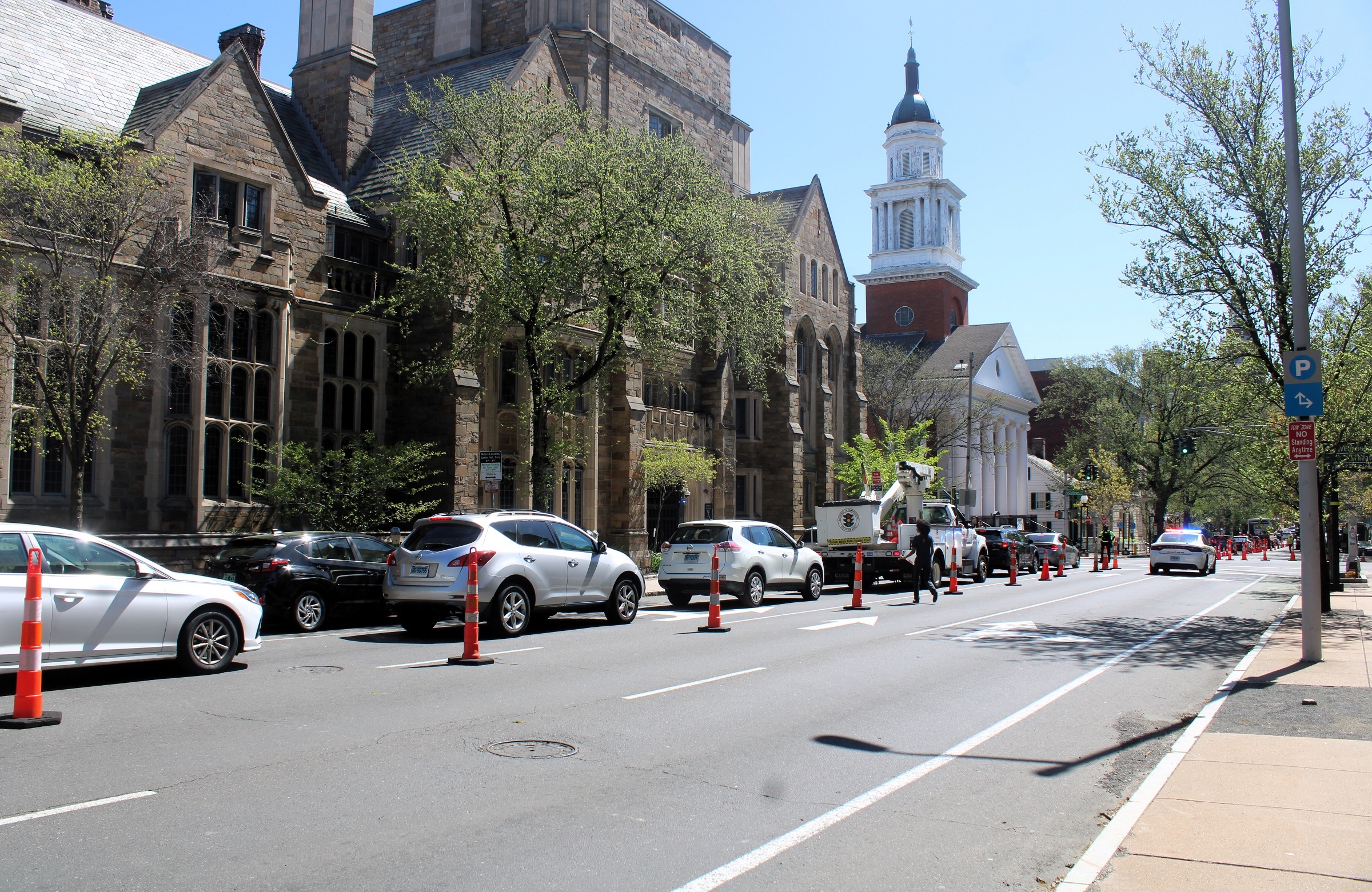
Thomas Breen photo
Whoa. What’s with all that traffic on Elm Street?
At around 11 a.m. Monday, cars sat bumper to bumper in all three east-bound lanes of Elm Street starting at York.

Near the intersection with High Street, orange road-work signs and traffic cones funneled the cars into an even tighter pack in a single lane on the northernmost side of the one-way eastbound corridor.



A police officer waved on foot and bike and car traffic at Elm and College …



… and, sure enough, the cause for the traffic was revealed between College and Temple, where a half-dozen National Water Main Cleaning Co. trucks and other vehicles blocked two travel lanes, the bike lane, and the street parking adjacent to the Green.
“Due to scheduled utility construction two lanes of Elm Street will be closed,” reads a city alert sent out Sunday at 6:30 p.m. “This will impact Temple Street as well. Buses will be rerouted and stops may change. Please allow extra travel time and if possible avoid the area.”
What kind of utility construction work?
According to an email sent by Greater New Haven Water Pollution Control Authority (GNHWPCA) Senior Engineer Ricardo Ceballos to city officials on Friday afternoon, “the remaining Cured-In-Place Pipe (CIPP) lining work” on Elm Street between Temple and Church began at 6 p.m. Sunday, “in accordance with the City’s request.”
“This work is part of the ongoing rehabilitation of the historic 1870s brick sewer,” Ceballos continued. “Due to the complexity of the conditions encountered during the previous attempt, the Greater New Haven Water Pollution Control Authority expects this final phase to take approximately 24 hours to complete. Barring unforeseen circumstances, the project is expected to be finished by 6:00 p.m. on Monday, April 28, 2025.”

In a phone interview with the Independent at around noon Monday, Ceballos, the GWNHPCA senior engineer, said that the crew is way ahead of schedule. He said the work was successful, and the lanes should be open again well before 6 p.m.
Ceballos said that the “Cured-In-Place Pipe (CIPP) lining work” uses a technology that allows for a “very large pipe” under Elm Street to be restored to a state of good repair for another century or so — without construction crews having to dig up the whole block.
He said the brick sewer in question was built in the 1870s. It’s around 30 by 40 inches large, sits 15 feet below the street, and carries 1.5 million gallons of sewage on a daily basis. “It’s a very important part of our infrastructure.”
The technology being used today “introduces a felt, kind of like a sock impregnated with a resin.” Once that material goes inside the pipe, “it’s cured by heat” — with the help of hot water or steam. The process of curing turns the resin from a liquid to a solid. “When it’s all set and done, we have a brand new pipe for the next 100 years” — all with no excavation. It’s “like a brand new PVC pipe inside the old brick sewer.”
Ceballos said that, “if we tried to replace or rehabilitate” this pipe by digging, that would could take a month or two. It’d be an “absolute nightmare” — as it would involve making a hole big enough to take out a pipe laid 15 feet deep.
Here, he said, the work should be done within an hour or two. And, as of early Monday afternoon, it appears to have been a success.